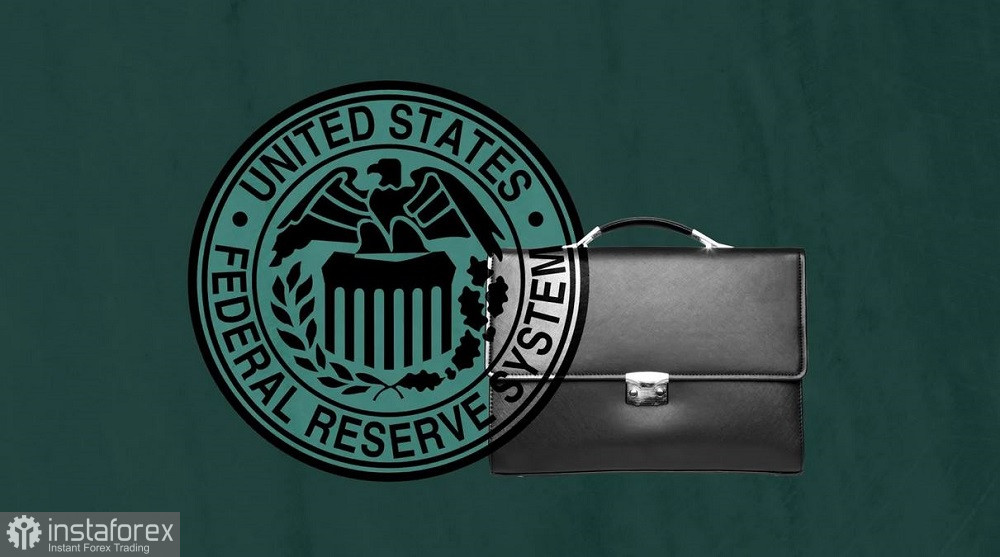As the U.S. trading session draws to a close on Wednesday, the U.S. Federal Reserve will announce the results of its last meeting of the year. And although the formal outcomes of this meeting have long been predetermined, we should still prepare for a storm of volatility, as the stakes are high—the further prospects of tightening/easing monetary policy.
According to the CME FedWatch Tool, the probability of maintaining the status quo at the December meeting is 98.4%. In other words, the market is confident that all parameters of monetary policy will be kept unchanged today. This will be the third consecutive meeting where the Federal Reserve takes a pause, so we can talk about the completion of the tightening cycle of monetary policy. Moreover, market expectations for the next few meetings are exactly the same: traders are confident that the rate will remain at the current level. For example, the probability of policy tightening in January is only 1.7%, in March – 1.0%.
However, starting from the March meeting, the probability of a 25 basis points rate cut begins to rise. In particular, the chances of easing monetary policy in May are estimated at 50% (again, according to the CME FedWatch Tool).

In other words, the market is absolutely certain that the regulator completed the current tightening cycle two meetings ago and will not return to this issue. Maintaining the status quo in the foreseeable future is the main line; deviation from which will provoke strong volatility among dollar pairs. The question is only whether the dollar will benefit from this volatility.
According to some experts, the main intrigue of the December meeting is one question: will the American regulator discuss the strategy of easing monetary policy next year? But in my opinion, there is no intrigue here—the central bank is unlikely to raise this issue since inflation is still far from the target level. Therefore, Fed Chairman Jerome Powell will likely assure the markets that the rate is working and will continue to work until the regulator achieves its inflation target. Powell has repeatedly stated recently that he considers discussing when the central bank can start easing monetary policy as premature.
However, the Federal Reserve may still announce certain dovish signals. Or vice versa—not say certain phrases that have been repeated from meeting to meeting for many months. For example, the central bank may remove from the accompanying statement the phrase that the central bank is ready to resort to "additional policy tightening," narrowing this message down to a simple desire to reduce inflation to two percent. In addition, Committee members may change wordings in forecasts for inflation, the labor market, the real estate market, and overall economic growth.
In addition, dovish signals may also manifest in the grid of individual forecasts (dot plot). The dot plot can reflect certain signs of upcoming easing of monetary policy.
According to other experts, particularly ING, the Federal Reserve will actively resist expectations of a rate cut in the foreseeable future—this message will be the main leitmotif of the December meeting. This includes the date of the first rate cut and the overall scale of the reduction. In particular, the dot plot may reflect a modest rate cut next year (50 basis points or less).
Thus, the conditionally hawkish scenario implies only the Federal Reserve deviating from market forecasts regarding the easing cycle next year. The conditionally dovish scenario also has a rather veiled character. Powell will not directly discuss easing monetary policy (in fact, he will likely deny such intentions). However, the regulator may signal in a different way, for example, by changing key formulations in the accompanying statement or adjusting the dot plot accordingly (allowing for a rate cut of more than 50 basis points).
In essence, Powell may surprise with dovish passages, even if he refutes the central bank's intentions to ease monetary policy in the near future. He may state that inflation is slowing at a leading pace, and the labor market is gradually cooling. The market would interpret such rhetoric against the greenback, perceiving it as an indirect dovish signal.
Thus, the December meeting of the Federal Reserve is sure to be eventful. However, the "devil" will be in the details—the tone of the final communique and Powell's rhetoric. The regulator will try to maintain balance, but, in the current conditions, it will be challenging to do so, as the market's dovish expectations regarding "spring prospects" do not align with inflation that remains above the target level.





















